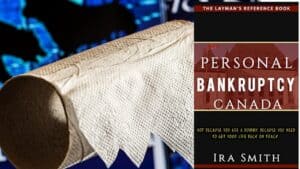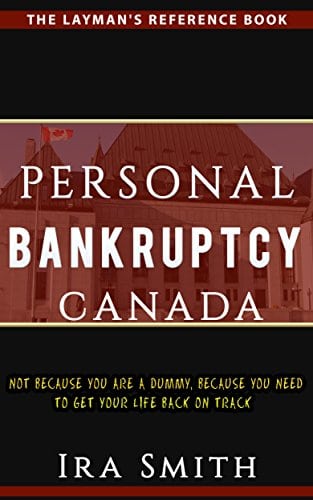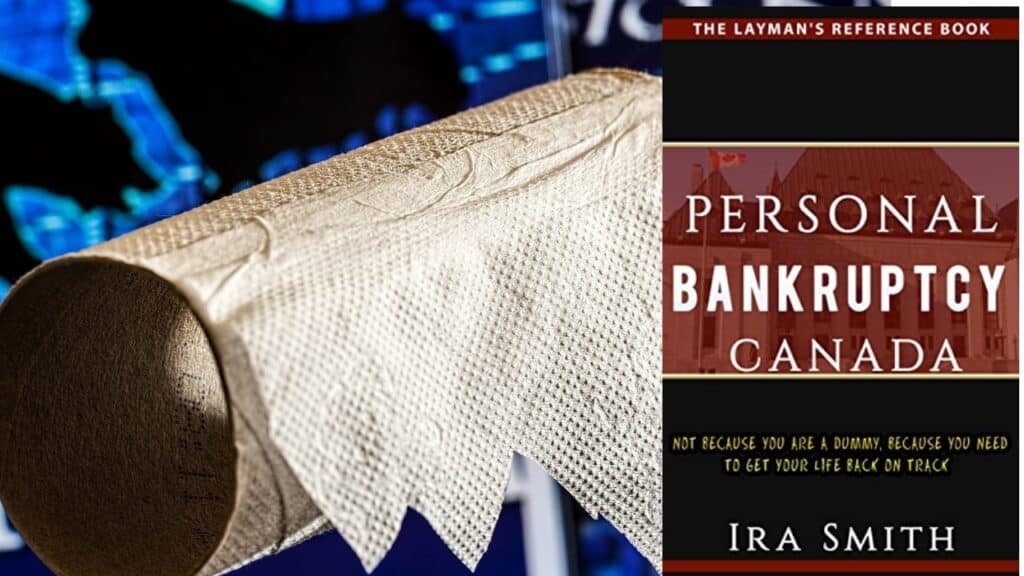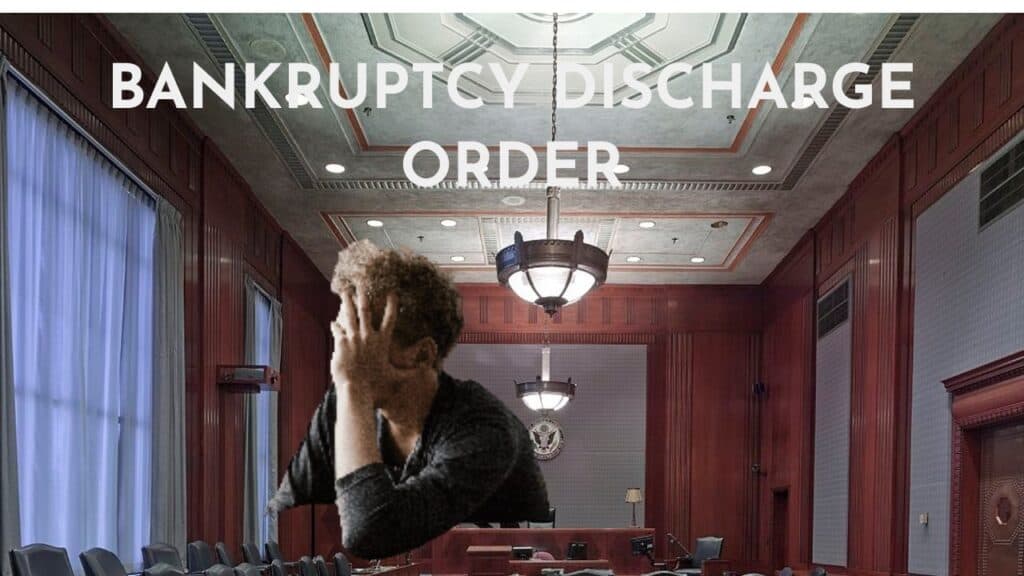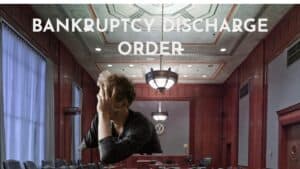We hope that you and your family are safe, healthy and secure during this COVID-19 pandemic. Ira Smith Trustee & Receiver Inc. is absolutely operational and Ira, in addition to Brandon Smith, is readily available for a telephone consultation or video meeting.
If you would prefer to listen to the audio version of this Brandon Blog, please scroll to the very bottom and click play on the podcast.
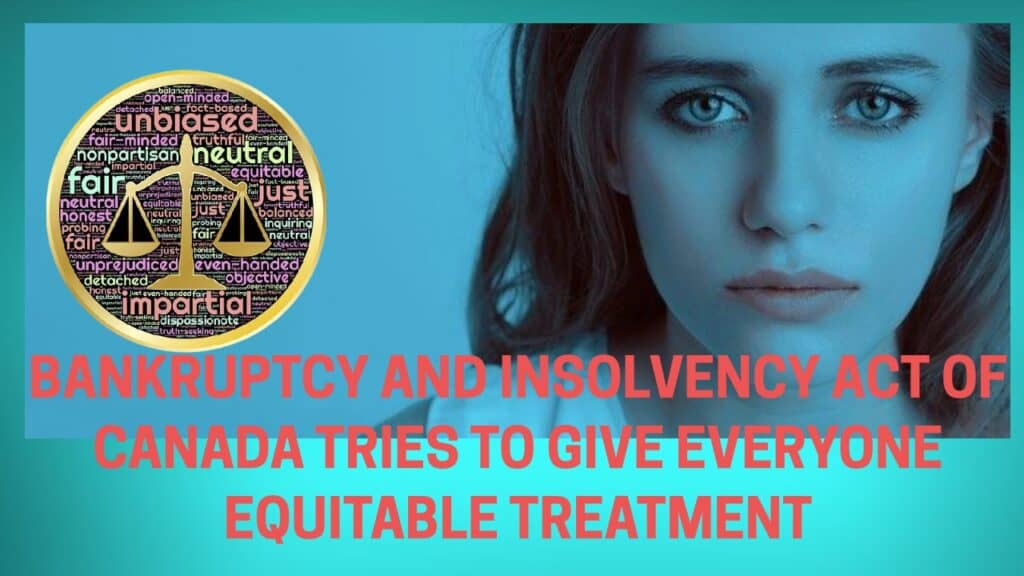
What is the purpose of the Bankruptcy & Insolvency Act of Canada?
With all the talk of the economy, supply chain problems and the uncertainty of the future these days, it’s no wonder that many people aren’t sure how they will end up when things become “normal” again.
For Canadian people and businesses with too much debt, an insolvency proceeding under the Bankruptcy and Insolvency Act of Canada might just be the answer to getting back to a healthy stress-free life. Notwithstanding that using this federal statute can be a very effective strategy for managing financial difficulties, it is a very scary one that people do not like to talk about.
The Bankruptcy and Insolvency Act of Canada is based on the principle of balancing fairness, equity and a fresh start. A recent court decision in Saskatchewan exemplifies these principles. In this Brandon Blog, I describe a little bit about the Bankruptcy and Insolvency Act of Canada, explain the court decision and how the court used these principles in reaching its decision.
What is in the Bankruptcy and Insolvency Act of Canada?
Canadian citizens, businesses, and companies who run into financial difficulties can turn to the Bankruptcy and Insolvency Act of Canada for assistance. This federal legislation contains the laws, rules, and guidelines that all involved parties must abide by. It details how different financial options work legally, and defines the roles of the various stakeholders – the Office of the Superintendent of Bankruptcy, the Licensed Insolvency Trustees, the debtor, and the secured creditors and unsecured creditors (both preferred and ordinary).
Despite the fact that provincial legislation in Canada may overlap or affect stakeholder rights, federal bankruptcy legislation has priority over provincial legislation in insolvency matters. Therefore, provincial governments cannot do indirectly what is prohibited directly. However, there are cases where provincial laws will still apply. The laws surrounding property exemptions and enforcement of court orders differ from province to province and territory to territory. These provincial and territorial regulations continue to apply even under bankruptcy laws.
It is the Bankruptcy and Insolvency Act of Canada that governs all bankruptcies and proposals (either Division I or consumer proposals) in Canada. Receiverships are also governed by the Bankruptcy and Insolvency Act of Canada. The Laws of Canada – Bankruptcy and Insolvency, are meant to give the honest but unfortunate debtor, be it a person, business or company, a fresh start in life.
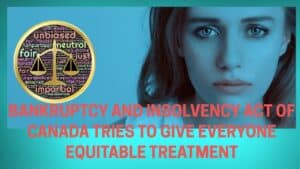
Growth in consumer proposals and business proposals
A person who files for the personal bankruptcy process submits an assignment in bankruptcy and related documents to a Licensed Insolvency Trustee. These documents outline the person’s assets, liabilities, income, and expenses. An insolvent person’s reason for insolvency must also be included in the documents. Individuals typically give the reason for not being able to pay their bills in a timely manner. Consumer proposals require very similar documentation as bankruptcy, except for the assignment in bankruptcy document.
In order to file a Division I Proposal under the Bankruptcy and Insolvency Act of Canada, insolvent companies must describe their assets and liabilities and provide a realistic cash flow statement documenting how they intend to operate under the proposed insolvency process. They must also explain how they became insolvent. Personal insolvency is less complex than corporate insolvency.
Despite a long-term decline in individual bankruptcy filings, consumer proposals have gained in popularity among individuals. The decrease in bankruptcy filings and the increase in proposals can be attributed to several different reasons. Under a proposal, a financial reorganization or restructuring is what is done. Bankruptcy is simply a liquidation.
Regardless of whether it is a consumer proposal, a Division I proposal, or bankruptcy, the Bankruptcy and Insolvency Act of Canada governs these proceedings. The Companies’ Creditors Arrangement Act, another federal government statute, governs reorganizations of very large corporations. This is especially true if there are separate insolvent corporations under the corporate umbrella in different countries, requiring foreign proceedings.
Why does one choose a consumer proposal instead of filing for bankruptcy?
A consumer proposal has many advantages over bankruptcy proceedings. By filing a consumer proposal, you’re able to retain the property you own such as your home, car, boat, etc. and extinguish all of your debts while only paying back a portion. A consumer proposal doesn’t require any of those items to be sold, as long as you can afford them with the monthly payment made under the proposal and your other living expenses.
Changing your lifestyle can help you get out of debt more quickly with a consumer proposal. Bankruptcy means losing everything, except for some assets that are exempt under provincial laws. You have equity if you do not fully encumber your assets by way of secured loans from financial institutions, your house, car, boat, furniture, clothing, jewelry, or anything else of value. You can keep this equity in a consumer proposal, but you will lose it in bankruptcy.
The main reason why people should attempt to perform a successful consumer proposal instead of going straight into bankruptcy under the Bankruptcy and Insolvency Act of Canada is because of this. As you will see in the recent court case I am about to describe, if you don’t pay close attention to how you conduct your affairs once you declare bankruptcy, you might be exposed to another minefield even after receiving your discharge.

The Bankruptcy and Insolvency Act of Canada case
This judgment of the Registrar in Bankruptcy of the Queen’s Bench for Saskatchewan was released on October 6, 2021. It is a relatively simple case, but it described so well the equitable nature of the Bankruptcy and Insolvency Act of Canada.
In this legal process case, there are two unsecured creditors who are the Applicants. They jointly loaned money to an individual debtor, who is now an insolvent debtor and a bankrupt individual on an unsecured basis. They also filed their proof of claim for this debt with the insolvency trustee. They then applied for an order pursuant to s. 69.4 of the Bankruptcy and Insolvency Act of Canada lifting the bankruptcy stay that is in effect with regard to the bankrupt.
The purpose of section 69.3 is to prevent bankruptcy creditors from initiating or continuing enforcement proceedings against a bankrupt debtor. In bankruptcy, a creditor has no recourse against the debtor or the debtor’s property, and may not commence, continue, or seek any action for the recovery of money for a claim that is provable in the bankruptcy.
Nevertheless, Section 69.4 allows a court to lift the stay if it decides that the applicant has established that the continued operation of the stay is likely to cause material harm to him or her, or if there are other equitable grounds for lifting the stay.
The case: How the Bankruptcy and Insolvency Act of Canada works for fairness and equity
The bankruptcy process generally compromises the debt obligation of the bankrupt, resulting in creditor claims run through the bankruptcy claims process. Generally, unsecured creditors lose their right to enforce their types of debts and, as a result, realize less than 100% of their debt. Some creditors do not receive anything from an estate in bankruptcy.
There are two major objectives of bankruptcy (and consumer proposal or commercial proposal) proceedings under the Bankruptcy and Insolvency Act of Canada. For one thing, it provides an equitable system for distributing the proceeds from the estate in bankruptcy among the bankrupt’s unsecured creditors. According to the laws Of Canada – bankruptcy and insolvency, unsecured creditors are expected to be treated predictably and fairly. However, it does not guarantee that creditors will receive a dividend in all cases.
Secondly, it is intended to give an honest but unfortunate bankrupt an opportunity to be freed from the crushing burden of debt and receive financial rehabilitation to become a contributing member of society. That is one reason why every person who does an insolvency filing must attend two financial counselling sessions.
In bankruptcy, an automatic stay allows the bankrupt to re-establish himself or herself financially and restart his or her financial affairs so that he or she can meet his or her credit obligations moving forward without being hampered by debt enforcement proceedings.

The case: Role of unsecured creditors trying to lift the stay of proceedings
The Registrar, in this case, followed the reasoning of a 2001 decision from the Court of Appeal for Ontario. It is far from routine to lift the stay, and therefore the court has to make sure that the reasons for lifting the stay are sound and consistent with the objectives of the Bankruptcy and Insolvency Act of Canada.
In the case of Mcculloch (Re), 2021 SKQB 259 (CanLII), the two creditors were alleging that Ms. Mcculloch induced them to loan her the money on a fraudulent basis. It was their argument that they should be allowed to continue legal action against the bankrupt so that they could prove in a separate court action that the debt was a result of fraud and that, therefore, their claim would survive the bankruptcy and her discharge. In addition, they stated that they would be more severely affected than the commercial creditors if the bankruptcy stay bars them from taking action against McCulloch.
According to the Registrar:
- Bankruptcy often disproportionately affects individual creditors over commercial creditors. Generally, creditor relationships are based more on trust than on cost-benefit analysis. When advancing a loan, the commercial creditor such as a credit card company, unpaid suppliers, or a sophisticated secured creditor, generally assesses the risk and determines whether it can absorb the loss in the event of default. Individual lenders do not usually do this.
- If this form of prejudice is sufficient to support lifting the stay, other individual creditors may be able to apply to lift the stay merely on the basis of relative disadvantage to individual creditors. Lifting the stay on this basis is inappropriate.
- The Trustee objects to this application on the grounds that it will significantly increase the costs of bankruptcy administration at the expense of other creditors. In this case, the Registrar sided with the Trustee.
- According to the lawyer representing the bankrupt, the creditors have not established any material prejudice or other equitable grounds for lifting the stay. The Registrar agreed.
- Due to the potential cost increases to other creditors, the equities are opposed to lifting the stay.
- However, these 2 creditors still have rights in the bankruptcy. The court still has the right to hear their submissions at the discharge hearing. Additionally, they continue to have the right to pursue Ms. McCulloch once the bankruptcy proceedings are over.
- At this time, lifting the stay would not benefit the applicants or their creditor claims since during the bankruptcy, Ms. McCulloch’s either the bankruptcy vests her assets in the Trustee for the benefit of the creditors or remain exempt from execution under Saskatchewan law. This disposition of property makes it simply impossible for these creditors to realize much from this stage, prior to the bankrupt’s discharge.
- In this case, the equity does not support the court’s exercise of its authority to declare that the bankruptcy stay, established under section 69.3 of the Bankruptcy and Insolvency Act of Canada, does not apply to this litigation.
As a result, the Registrar denied the applicant’s request for what they thought was their legal rights in lifting the stay. Clearly, the Registrar was guided by the Bankruptcy and Insolvency Act of Canada‘s aims of fairness and equity to all stakeholders.
Bankruptcy and Insolvency Act of Canada summary
I hope you enjoyed this Bankruptcy and Insolvency Act of Canada Brandon Blog post. Are you worried because you or your business are dealing with substantial debt challenges and you assume bankruptcy is your only option? Call me. It is not your fault that you remain in this way. You have actually been only shown the old ways to try to deal with financial issues. These old ways do not work anymore.
The Ira Smith Team utilizes new modern-day ways to get you out of your debt difficulties while avoiding bankruptcy. We can get you the relief you need and so deserve.
The tension put upon you is big. We know your discomfort factors. We will check out your entire situation and design a new approach that is as unique as you and your problems; financial and emotional. We will take the weight off of your shoulders and blow away the dark cloud hanging over you. We will design a debt settlement strategy for you. We know that we can help you now.
We understand that people and businesses facing financial issues need a realistic lifeline. There is no “one solution fits all” method with the Ira Smith Team. Not everyone has to file bankruptcy in Canada. The majority of our clients never do. We help many people and companies stay clear of bankruptcy.
That is why we can establish a new restructuring procedure for paying down debt that will be built just for you. It will be as one-of-a-kind as the economic issues and discomfort you are encountering. If any one of these seems familiar to you and you are serious about getting the solution you need, contact the Ira Smith Trustee & Receiver Inc. group today.
Call us now for a no-cost consultation.
We will get you or your business back up driving to healthy and balanced trouble-free operations and get rid of the discomfort factors in your life, Starting Over, Starting Now.
We hope that you and your family are safe, healthy and secure during this COVID-19 pandemic. Ira Smith Trustee & Receiver Inc. is absolutely operational and Ira, in addition to Brandon Smith, is readily available for a telephone consultation or video meeting.

